Unlock the secrets of inheritance with this comprehensive guide to Punnett squares! Whether you’re a student tackling biology homework, a teacher seeking engaging classroom materials, or simply curious about genetics, this guide will take you from novice to expert. We’ll cover the basics, explore advanced techniques, and provide resources for practice. Let’s dive in and decipher the code of heredity!
Decoding Heredity with Punnett Squares
Punnett squares are powerful tools for understanding inheritance. They provide a visual representation of how traits are passed from parents to offspring, offering a glimpse into the fascinating world of genetics. This guide serves as your key to understanding and utilizing these essential diagrams.
What is a Punnett Square?
Imagine predicting the likelihood of your child inheriting your brown eyes or their other parent’s curly hair. A Punnett square helps visualize these probabilities. Based on Gregor Mendel’s pioneering work with pea plants, these squares bring the basic rules of inheritance to life.
Genetic Building Blocks: Key Terminology
Before constructing squares, let’s familiarize ourselves with the essential vocabulary:
- Genes: The fundamental units of heredity, like blueprints for specific traits.
- Alleles: Different versions of a gene (e.g., brown or blue eye alleles).
- Genotype: An organism’s genetic makeup, represented by letters (e.g., “BB”).
- Phenotype: The observable trait (e.g., brown eyes).
- Dominant Allele: Expressed even when paired with a different allele (e.g., “B”).
- Recessive Allele: Expressed only when paired with an identical allele (e.g., “b”).
- Homozygous: Having two identical alleles (e.g., “BB” or “bb”).
- Heterozygous: Having two different alleles (e.g., “Bb”).
Constructing Your First Punnett Square
Let’s predict eye color in offspring from a brown-eyed parent (Bb) and a blue-eyed parent (bb), where brown (B) is dominant and blue (b) is recessive:
Draw the Grid: A simple 2×2 square.
Assign Alleles: Parent 1’s alleles across the top, Parent 2’s down the side.
| B | b | |
|---|---|---|
| b | ||
| b |
- Combine Alleles: Fill each box by combining column and row alleles.
| B | b | |
|---|---|---|
| b | Bb | bb |
| b | Bb | bb |
- Interpret Results: 50% chance of Bb (brown eyes) and 50% chance of bb (blue eyes).
Finding Practice: Worksheet Resources
The internet offers numerous free Punnett square worksheets:
- Interactive Worksheets: Provide instant feedback and generate new problems.
- Printable Worksheets: Ideal for offline practice.
- Video Tutorials: Offer step-by-step explanations.
Real-World Applications of Punnett Squares
Punnett squares have practical uses in various fields:
- Predicting Inheritance: Estimating the likelihood of inheriting traits or genetic disorders.
- Genetic Counseling: Informing families about the risks of inherited conditions.
- Agriculture: Breeding crops and livestock with desirable characteristics.
- Evolutionary Studies: Modeling how gene frequencies change over time.
The Dynamic World of Genetics
Genetic research is ongoing, and our understanding constantly evolves. While Punnett squares are valuable tools, they are simplified models. Some traits are polygenic (influenced by multiple genes), and environmental factors can also play a role. Thus, Punnett squares estimate probabilities, not certainties. They offer a starting point for understanding inheritance but do not capture the full complexity of genetic interactions. Learn the fascinating patterns of inheritance by delving into our comprehensive pedigree worksheet. Explore the intricacies of genetic traits and trace their passage through generations.
5 Steps to Mastering Punnett Squares
Constructing a Punnett square is a straightforward process:
1. Define the Trait and Parental Information: Identify the specific trait and gather information about the parents’ phenotypes and genotypes.
2. Assign Allele Letters: Choose letters to represent the alleles (dominant – capital letter, recessive – lowercase letter).
3. Determine Parental Genotypes: Write down the genotypes of each parent.
4. Construct and Fill the Square: Draw the square and fill in each box with the corresponding allele combinations from the parents.
5. Interpret Results and Calculate Probabilities: Analyze the genotypes within the square to determine the probability of each phenotype.
Solving Punnett Squares: A Comprehensive Guide
Punnett squares help predict offspring traits based on parental genetics. Here’s how to solve them:
1. Understand Key Terms: Review terms like allele, homozygous, heterozygous, dominant, and recessive.
2. Build the Square: Draw a 2×2 square for monohybrid crosses (one trait) or a 4×4 square for dihybrid crosses (two traits).
3. Arrange Alleles: Place one parent’s alleles across the top and the other’s down the side.
4. Fill the Boxes: Combine alleles in each box.
5. Analyze Results: Calculate genotypic and phenotypic ratios.
Example: Let’s consider a cross between two heterozygous individuals (Bb) for eye color:
| B | b | |
|---|---|---|
| b | Bb | bb |
| b | Bb | bb |
This predicts a 50% chance of brown eyes (Bb) and a 50% chance of blue eyes (bb).
Drawing a Punnett Square for GCSE: A Practical Guide
Punnett squares are crucial for GCSE Biology. Here’s how to draw them effectively:
1. Identify Parental Genotypes: Determine the genotypes of the parents based on the provided information.
2. Create the Square: Draw a square, its size depending on the number of alleles each parent contributes.
3. Arrange Alleles: Place one parent’s alleles across the top and the other’s down the side.
4. Combine Alleles: Fill in each box with the combined alleles.
5. Calculate Probabilities: Determine the probability of each genotype and phenotype. For example, if a Punnett square shows two ‘Bb’ out of four total combinations, then there is a 2/4 = 50% probability or a 1:2 ratio that the offspring will inherit the Bb genotype. Master the art of predicting inheritance outcomes with our engaging punnett square practice worksheet. Practice various scenarios to gain a deeper understanding of the fundamental principles of genetics.
Key Points to Remember:
- Punnett squares predict probabilities, not certainties.
- Real-world inheritance is more complex than simple Mendelian genetics.
- Environmental factors can influence phenotypic expression.
- Recent research suggests that our understanding of genetics continues to evolve.
- Some experts believe current models may be further refined or even challenged by future discoveries.
This comprehensive guide provides a solid foundation for understanding and using Punnett squares. Remember to practice and explore different scenarios to deepen your understanding of this fundamental genetic tool.
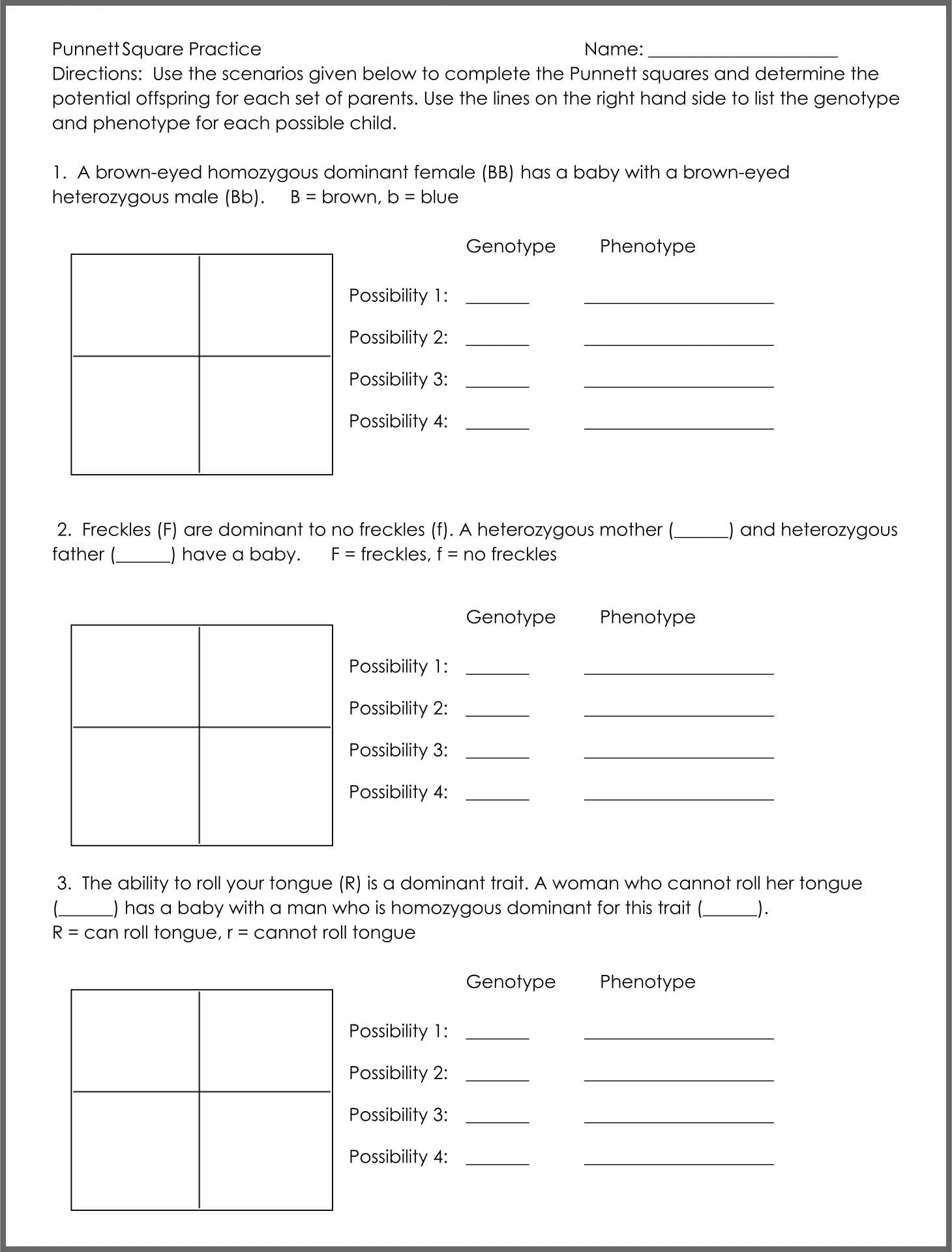
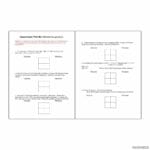
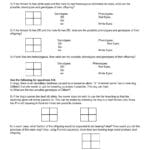
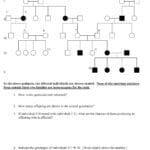
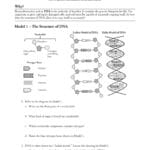





2 thoughts on “The Ultimate Guide to Free Punnett Square Worksheets: From Beginner to Advanced”
Comments are closed.